After receiving many messages and emails regarding the Intensive Professional Program in French Pastry at ESCF-Ferrandi, I decided to put together this FAQ. Click here for the full list of questions and answers!
Like my FACEBOOK PAGE or follow me on TWITTER / 微博!
Petites tartelettes, or mini tarts. Now aren’t these cute! To start, line molds with a thin pâte sucrée (sweet pastry dough).
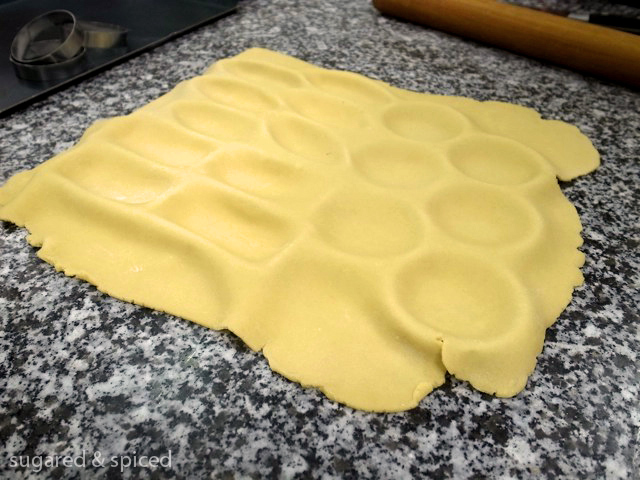
Cut off excess dough with rolling pin.
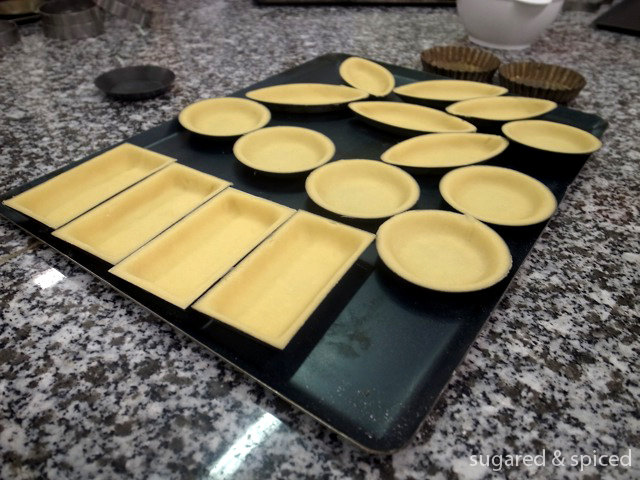
Poke holes at the bottom and pipe almond cream.
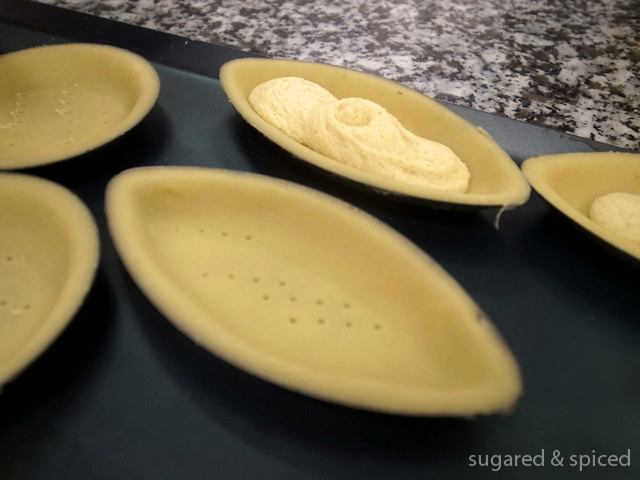
To make barquettes aux marrons, add red currants and bake.
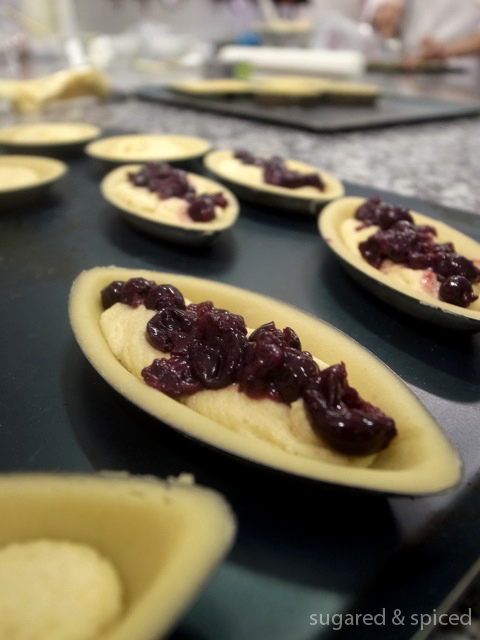
Like my FACEBOOK PAGE or follow me on TWITTER / 微博!
Really can’t say that I’m a big fan of baba au rhum, but it’s such a classic that one simply cannot skip this in pastry school. What it is: a small yeast cake, rich in eggs and butter, saturated in rum or other hard liquor. Let’s see how it’s done.
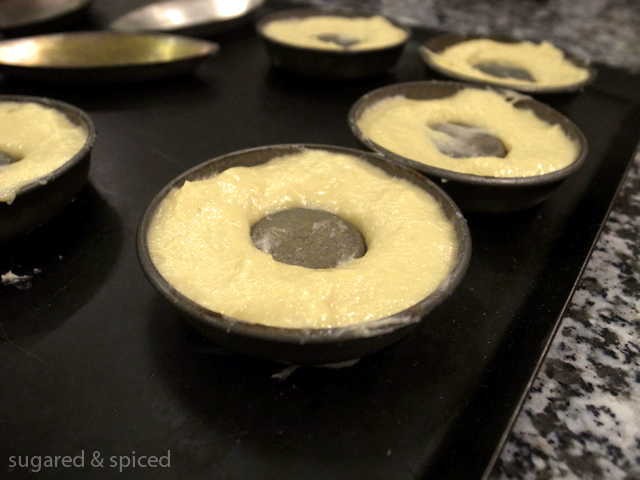
The dough is left to rise in a warm place until it doubles in volume, then baked in oven until nicely browed.
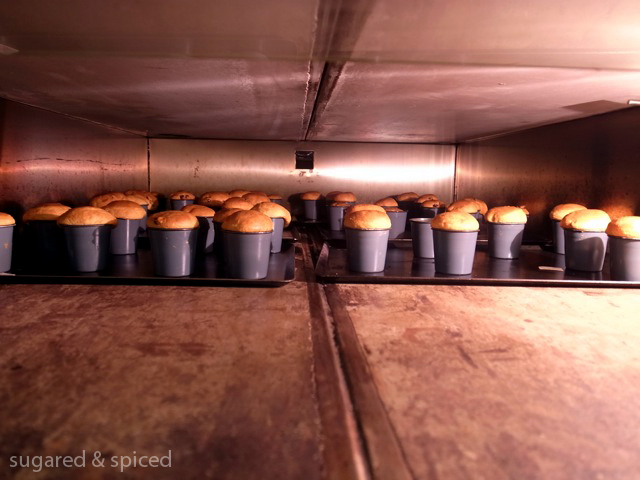
Savarins, a variation of baba au rhum, uses a circular ring cake mold and is soaked with different alcoholic syrups.
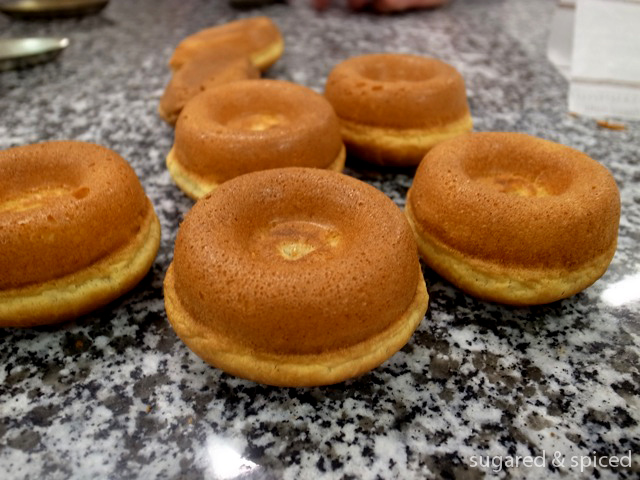
The baked babas, savarins, and marignans are soaked in hot syrup until soft and well-saturated.
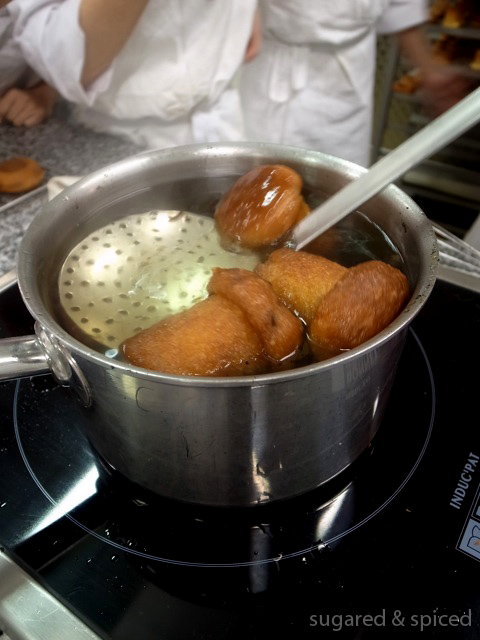
Like my FACEBOOK PAGE or follow me on TWITTER / 微博!
Following viennoiseries, we had a full week of pâte à choux, a light pastry dough for making éclairs, profiteroles, croquembouches, etc. Choux relies on steam trapped inside the dough to make it rise, and the technique used for making pâte à choux is designed to develop elasticity in the dough (to expand) while maximizing moisture (to generate steam when baking).
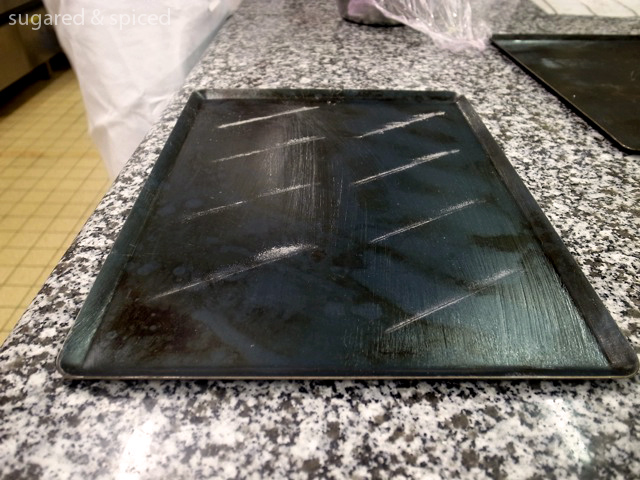
To make pâte à choux, melt salt, sugar, and butter in water, bring to a boil, remove from heat and add sifted flour. After mixing, add eggs little by little until dough is smooth and soft. Then, pipe batter using a pastry bag onto a lightly buttered baking sheet. Egg wash and streak with a fork.
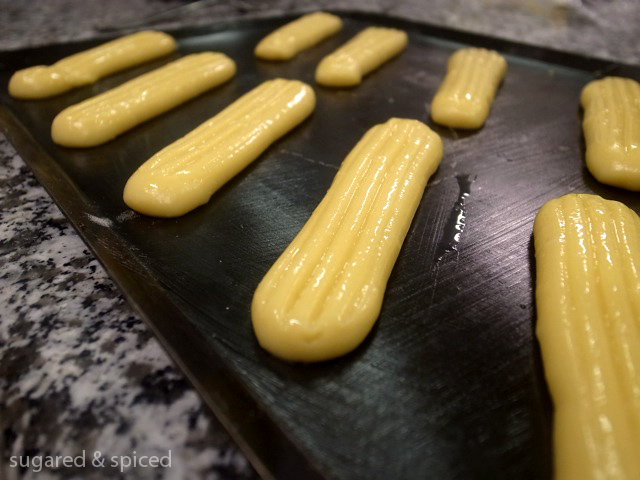
Once the choux have reached their full size, slightly open the oven door for steam to escape and allow choux to dry properly.
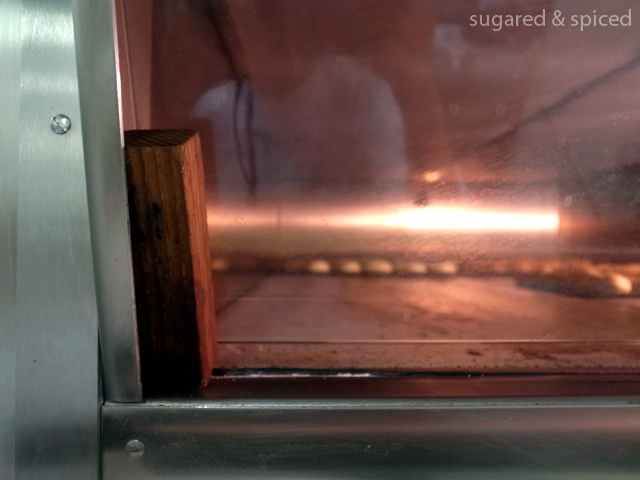
After cooling, poke 2~3 holes at the bottom of each choux, then fill with pastry cream.
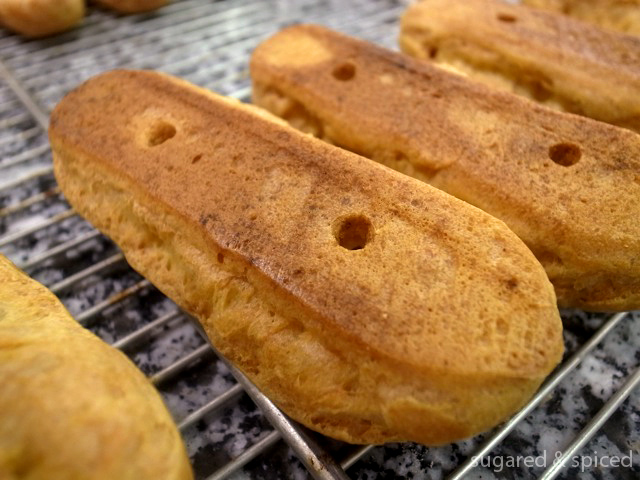
Like my FACEBOOK PAGE or follow me on TWITTER / 微博!
Croissants and pains au chocolat, I could eat them everyday for breakfast! These buttery flakey delights are especially irresistible when they are fresh out of the oven, so imagine how many of them I downed during our week of viennoiserie classes…oh boy, just think of the calories. Croissants and pains au chocolat are made of a layered yeast-leavened dough, similar to the feuilletage procedure for puff pastry (read: copious amount of butter). To form croissants, start by rolling out and cutting the dough into long triangles as pictured below.
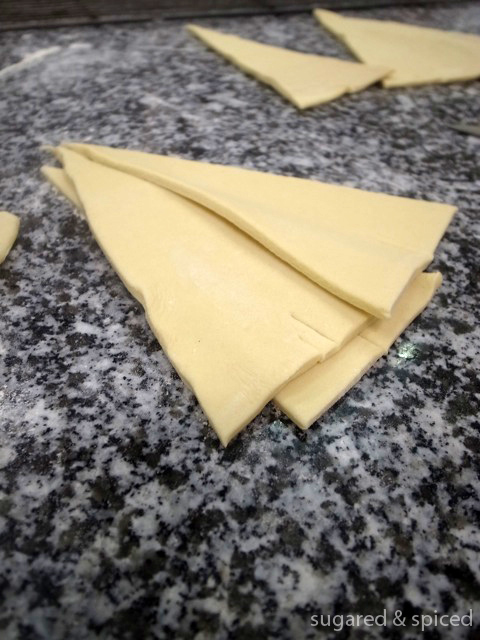
Roll ’em up.
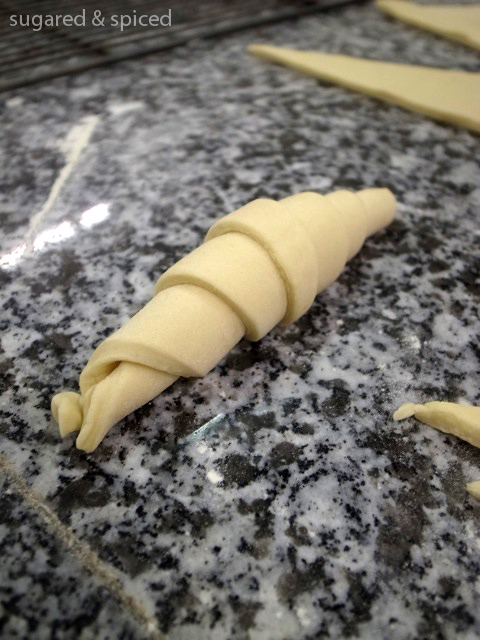
Egg wash and let rise for about two hours at 25C.
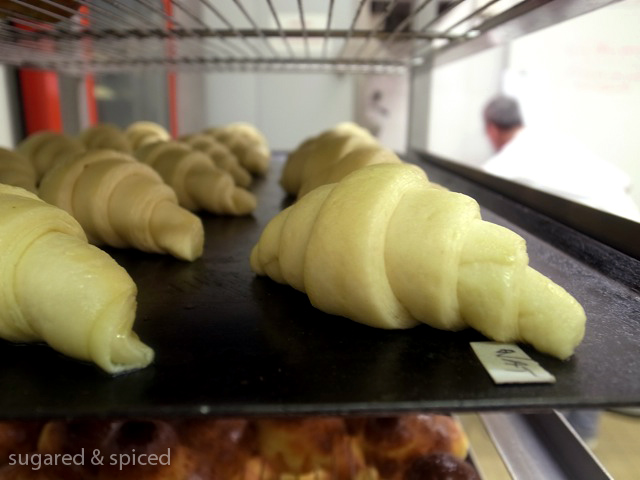
Egg wash again and bake!

Like my FACEBOOK PAGE or follow me on TWITTER / 微博!
This week we are moving on to viennoiserie, including brioches, croissants, pains au chocolat, escargots, and danishes. The first thing we made was brioche dough, which is composed of T45* flour, yeast, salt, sugar, eggs, and butter. It’s made like a bread, but has the richer aspect of a pastry because of the extra addition of eggs and butter. After the dough is formed, it is left to rise at room temperature until doubling in volume, punched down, and let rise again in the fridge.
*The number after T indicates the ash ratio of the flour, the proportion of minerals remaining after the flour has been burned at 900°C. The higher this number is, the higher the proportion of bran there is in the flour. T45 flour is typically used for making cakes and pastries, while T55 and above are used to make breads.
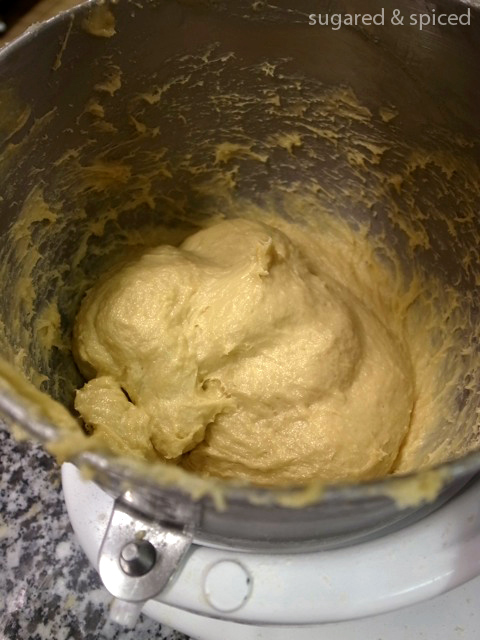
Brioche can come in many forms, but the most classically recognized one is probably brioche à tête. To achieve this form, start by rolling small balls of dough with the side of your hand (think karate chop) so that dough becomes bowling pin-shaped.

Then, place the dough in a well-buttered mold, resting the fatter ball (body) at the bottom. Dig a ring-shaped hole in the body, working your way around the smaller ball (head), and let the head rest on the body. The head should be attached to, not severed from, the body.
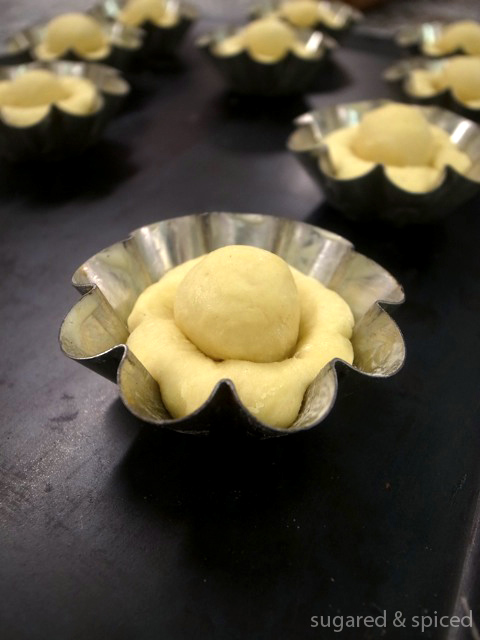
Let rise and egg wash, but avoid egg washing the part where the head attaches to the body, or else the dough will stick together and not rise properly.
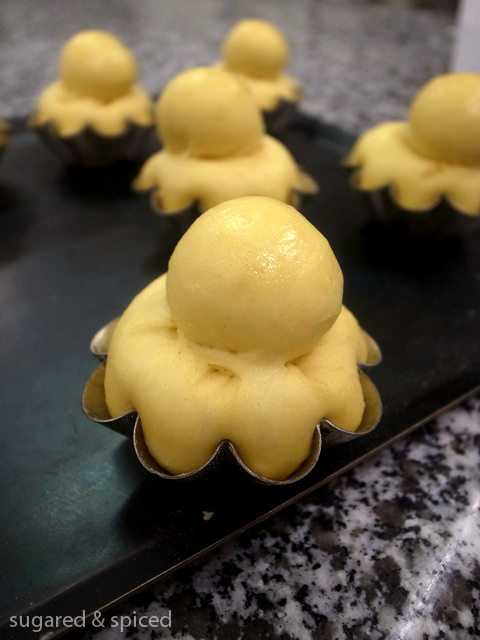
Like my FACEBOOK PAGE or follow me on TWITTER / 微博!
I was beyond excited when chef told us that we would be making mille feuilles this week, and not just one, but four different versions! The classic one is mille feuille traditionnel, which is simply regular puff pastry sandwiching vanilla pastry cream. To start, bake a sheet of plain puff pastries using regular puff pastry dough, making sure to roll the dough out evenly so all parts are done baking at the same time. Immediately after baking, sprinkle puff pastry with icing sugar and put it back in the oven for a brief moment to form a caramelized surface.
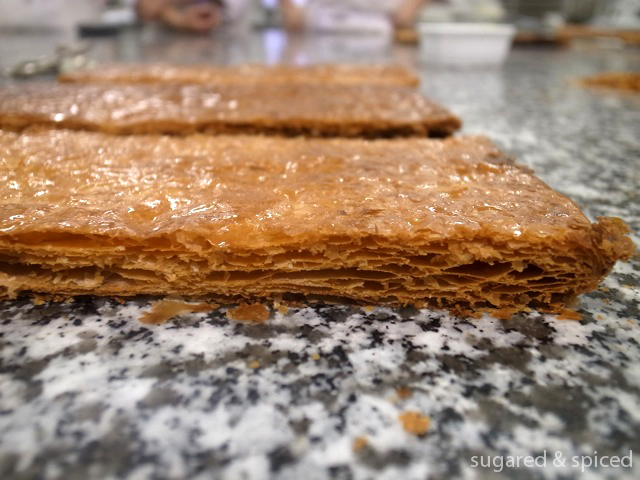
Cut puff pastry into three sheets of equal width, then fill with pastry cream (add rum if desired).
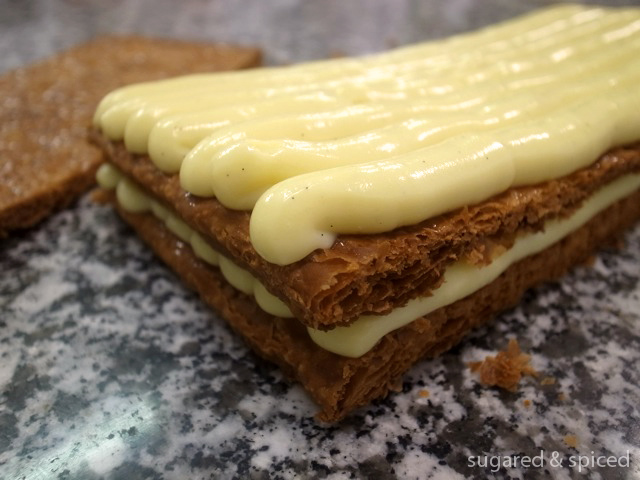
Dust with icing sugar, and slice into individual servings. Simple as that! But of course, the most difficult part was making the puff pastry dough itself.
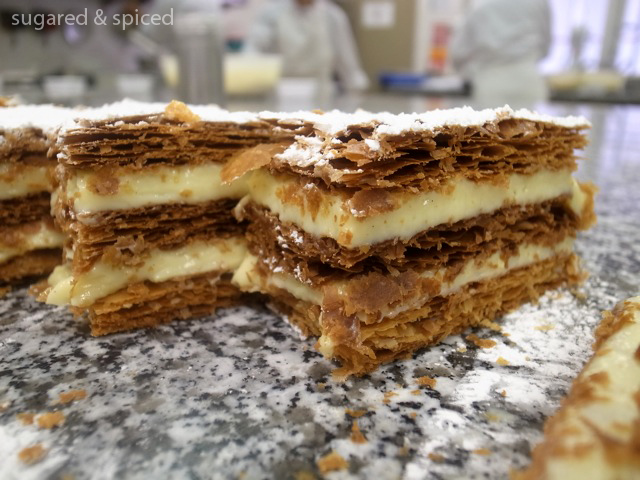
We also made a few fun variations, such as a mille feuille pistache fraise. To make the pistachio puff pastry dough, incorporate pistachio paste in the feuilletage inversée recipe. The dough will be softer than regular feuilletage inversée, and might need to be refrigerated for a longer period before being worked on.

Like my FACEBOOK PAGE or follow me on TWITTER / 微博!
We continued working with puff pastry dough this week and made a few more variations, starting with these puff pastry tart bands. First, roll and cut out a band of puff pastry (40 by 12 cm), double the two sides, making sure to glue the two layers with egg wash. Use a fork to poke holes in the center to prevent puffing in the oven.
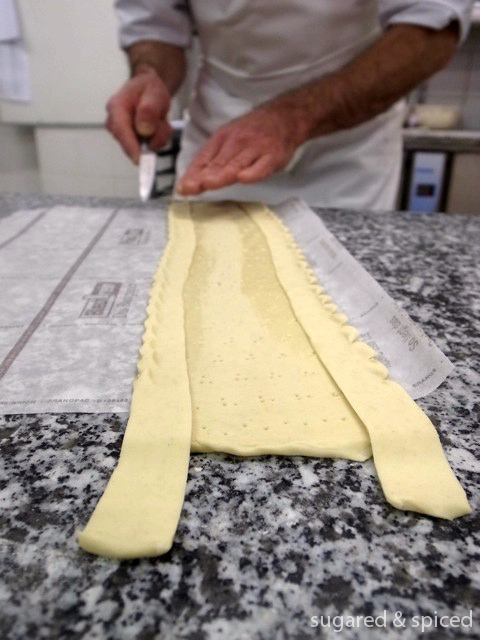
Use knife to create a border design on the sides. Egg wash the borders but not the center.

Cover with apple compote and thinly sliced apples. Brush apples with melted butter.
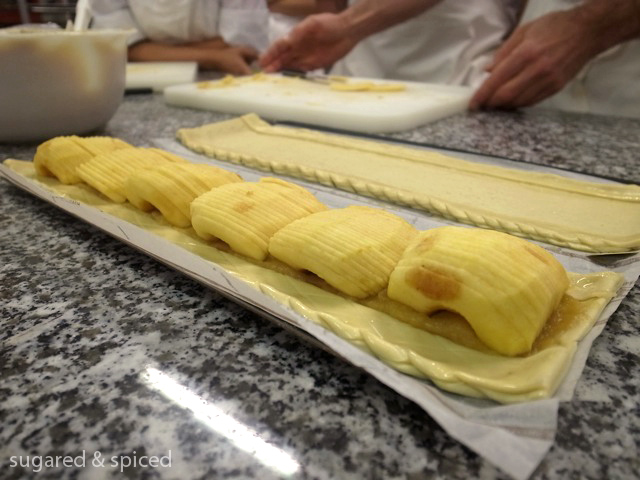
Bake until apples are slightly browned and the bottom of the tarts are nicely browned.
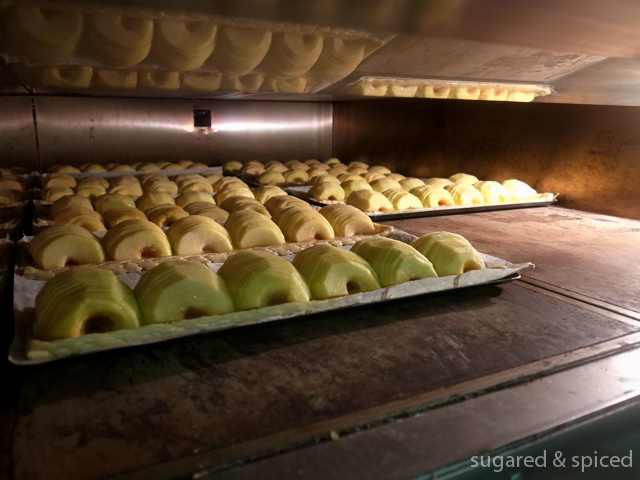
Like my FACEBOOK PAGE or follow me on TWITTER / 微博!
In week 4, we moved on to pâte feuilletée, or puff pastries. Pâte feuilletée is formed with multiple layers of dough and butter, and when baked, the steam in-between the layers push up to form the airy flakiness. To make this dough, start by making a well out of flour and butter, then slowly mix in the water.
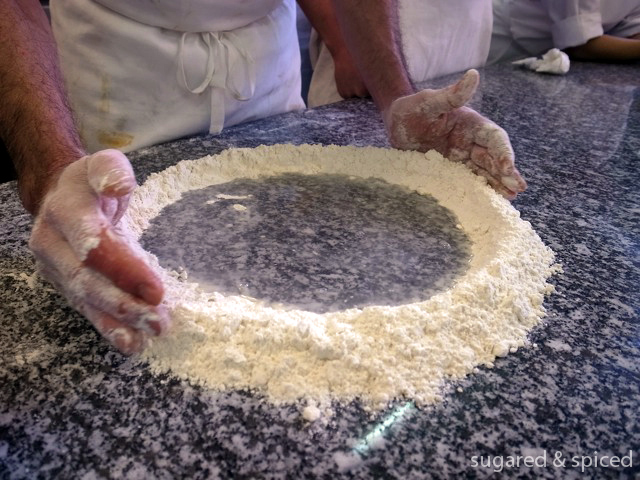
Knead the dough with a scrapper.
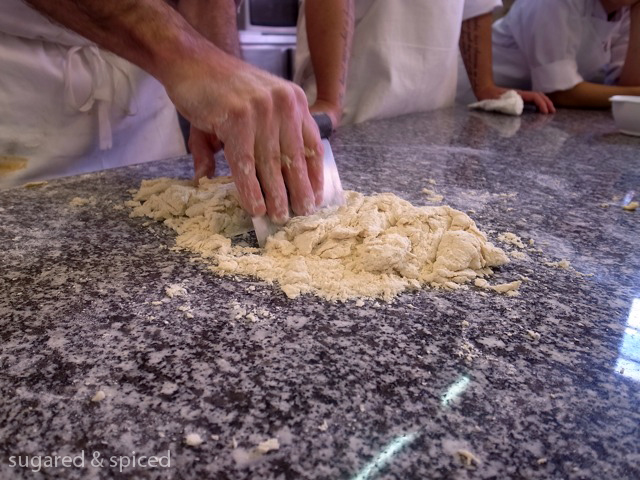
Form the dough into a ball, cut an “X” at the top, and let rest for 30 minutes in the fridge.
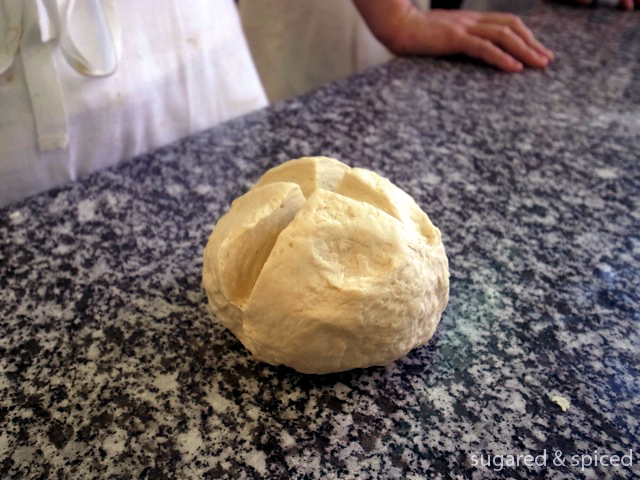
Then, enclose a block of softened butter in the dough. The key is to have the dough and the butter in a similar consistency (i.e. the butter cannot be too soft or too hard), so that the dough can be rolled out evenly.
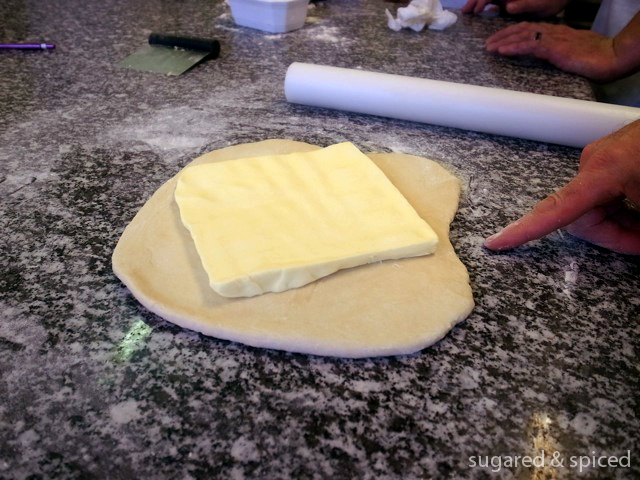
Like my FACEBOOK PAGE or follow me on TWITTER / 微博!
We continued with more tarts using variations of the pâte sucrée (sweet pastry dough). Take this Austrian Lintzer Torte for example, its pastry dough is added with just a dash of cinnamon powder for extra flavor. The tart shell is filled with a layer of almond cream, a layer of raspberry jam, then topped with a lattice design.
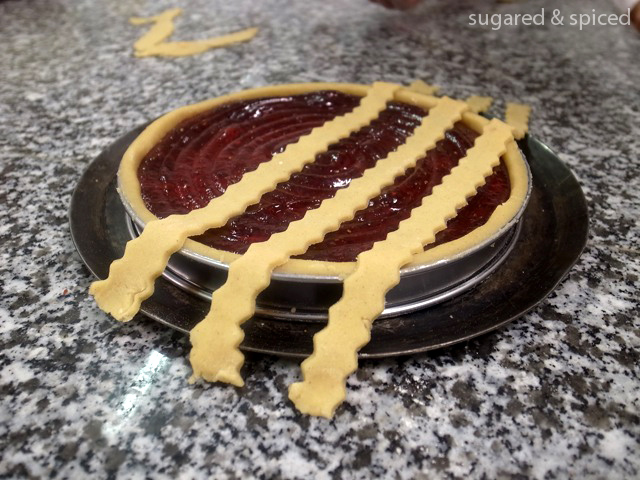
The dough strips of the lattice is made by this nifty little tool.

The completed lattice design.
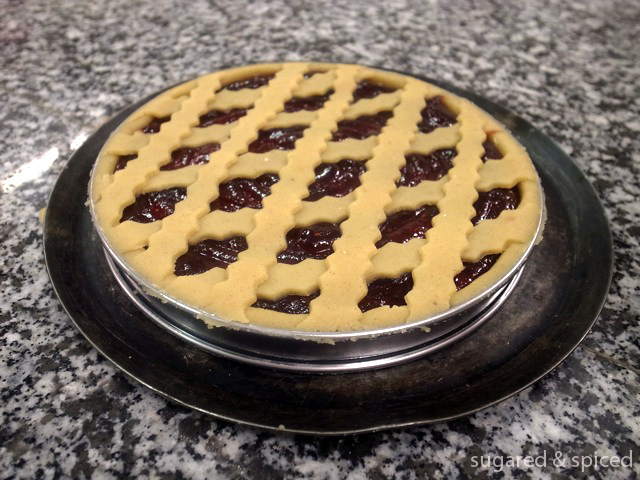
Bake, glaze, and line with pistachio powder around the border for a striking visual effect.
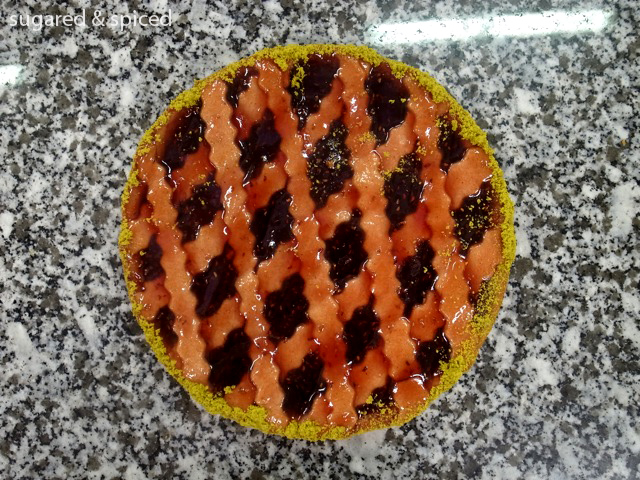
![[Ferrandi] …and the FAQ is out!](https://www.sugarednspiced.com/wp-content/uploads/2013/03/R00417131.jpg)